Thursday 5th May to Sunday 8th May
We were rather nervous about visiting St Vincent. There had been many reports of theft from yachts at anchor in the bays along the west coast of the island and in March of this year the German skipper of a yacht was shot and killed when three masked men armed with a gun and a machete boarded the yacht at anchor in Wallilabou, a popular  bay where scenes from Pirates of the Caribbean had been filmed. Many of the yachts we met were bypassing the island completely and sailing on to Bequia, the next island south, which is a shame for the islanders of St Vincent, many of whom rely on their livelihood servicing the various needs of yachties. We were still keen to stop there as it is reportedly an unspoilt, beautiful island of towering mountains, rugged, dense green forest and few tourists. We particularly wanted to visit the Montreal Gardens in the Mesopotamia Valley, unusual and spectacular botanical gardens, and to hike up the 4000 foot Soufriere Volcano as part of our volcano climbing exploits.
bay where scenes from Pirates of the Caribbean had been filmed. Many of the yachts we met were bypassing the island completely and sailing on to Bequia, the next island south, which is a shame for the islanders of St Vincent, many of whom rely on their livelihood servicing the various needs of yachties. We were still keen to stop there as it is reportedly an unspoilt, beautiful island of towering mountains, rugged, dense green forest and few tourists. We particularly wanted to visit the Montreal Gardens in the Mesopotamia Valley, unusual and spectacular botanical gardens, and to hike up the 4000 foot Soufriere Volcano as part of our volcano climbing exploits.
I put a question on the Facebook site for Caribbean Security and the answers came flooding in: that it was considered safe to moor at the Blue Lagoon Marina on the south of St Vincent, and how lovely and friendly the island is. I even got a reply from Chris Doyle, the man in the Caribbean sailing world who writes the definitive guides to cruising in the Windward and Leeward islands, the chain of islands in the eastern Caribbean where we are.
We set off from St Lucia soon after 5am to make sure we arrived at Blue Lagoon well before sunset and near to high tide. As we left our mooring between the Pitons in St Lucia it was one of those magical mornings you can get when sailing, a perfectly still and lovely dawn at sea, the sun just starting to rise behind the land and edging the clouds in silver and pink.
Later, as we crossed the 45 miles from St Lucia to the south of St Vincent, Will fished from the back of the boat, trolling with our new purple lure, but without success. We had a great sail down the eastern, windward coast of St Vincent, close hauled in force 4 easterly winds and arrived as planned just after 3pm. A boat came out from the marina to guide us through the narrow entrance in the shallow reef surrounding the Blue Lagoon where we had a warm welcome from the marina staff, who helped us to tie up to the pontoon and provided particularly strong rum punches on the house.
Hugh and I hired a car and drove up into the hills to visit the Montreal Gardens. Although it was our intention to set off early, events conspired against us all along the way. Having been picked up in a rather racy looking, low slung black convertible, we had to drive via the airport to get a temporary St Vincent drivers licence for Hugh. The key to our car broke so we had to return to base and transfer to another car, a jeep. We headed up through the hills with spectacular views down across the fertile Marriaqua valley below, only to find our way blocked by a landslip across the road. We tried to take a diversion along potholed minor roads, winding through numerous little villages, and got thoroughly lost. Eventually we came to the Mesopotamia Valley, a lush, green agricultural valley, stretching up into the mountains with wonderful views. We drove higher up into the hills until we arrived at the Montreal Gardens, tucked in at the head of the valley under the steep mountain. It was a Friday and the gardens had shut early and they didn’t open at the weekends. We peered over the gates and did wonder about climbing in, we thought we could easily hide ourselves amongst the riot of trees and plants, but eventually drove back down the exotic valley, which was reward enough in itself for the long drive. On the way down we gave a lift home to a woman who worked as a carer for an elderly person in the town of Mesopotamia, a busy little town at a river crossing. She told us how three of her children were working in Canada. This seems common and we have met several people with grown-up children studying or working overseas, particularly in Canada, or people who have been brought up overseas then returned to work or retire in the Caribbean island that their parents had originally emigrated from.
The next day we made an early start to trek up the volcano whilst Will and Willa decided to have a day relaxing by the pool, both still suffering from the heat and Willa not yet recovered from her virus. The drive to the volcano was up the eastern side of St Vincent, through villages with names such as Adelphi, Diamond and Friendly, and then inland through farmland, with banana plantations, golden coconut palms, breadfruit and a field of Scotch Bonnets. We gave a lift to a Rasta farmer walking up to his farm where he grew breadfruit, yams and ginger. He told us how badly farmers did here from growing bananas, unable to compete with cheaper fruit from Central and South America, and that the banana crop had been decimated a few years ago by Black Sigatoka Disease. We had wondered why the bunches of bananas were grown in blue bags, which he explained kept the fruit looking blemish-free for the European market, although the blue bags were bad for the environment as they weren’t biodegradable. We could see discarded blue bags lying all around in the fields. St Vincent is exploring geothermal sources of energy from the volcano, and the farmer was clearly keenly aware of environmental issues. We talked about how fertile the volcanic soil is here, St Vincent being known as the Garden of the Grenadines providing the other islands with produce, and he told us “if you stand still long enough you’ll take root”.
By the time we reached the car park at the end of the road we were glad we had the four wheel drive Jeep, it was such a potholed, rutted road. The trail to the top of the volcano lead through the rainforest for the first hour, initially a gentle sloping path the going became harder, up a series of steep bamboo steps, eventually becoming narrow, uneven and rocky. The forest was dense and luscious, tall trees with bromeliads and orchids clinging to their trunks, palms, ferns, hanging vines and towering bamboo creaking eerily as, blown by the wind, their stems rubbed together. It was misty and mysterious, a hundred shades of green, interspersed with splashes of colour from red and yellow heliconias, and bright birdsong including the high-pitched ringing sound of the elusive whistling warbler, a bird endemic to St Vincent. It was so hot and humid we were soon dripping with sweat, even the individual hairs on my arms had their own little droplets clinging to them!
We were overtaken by a young man heading past us up the path, not looking like a typical hiker so I asked him if he was working in the forest. He said he was going to plant cannabis. We looked out for marijuana plants on our way up, but there were no signs of any. I later read that St Vincent has 2,500 cannabis cultivators, mainly in the foothills of the Souffriere Volcano and that since the demise of the banana economy it is an important source of income for them, most of the cannabis being exported through nearby islands. However it damages the rainforest, is a dangerous and risky business selling the product on, and action by the St Vincent government, supported by the USA, to eradicate has meant that the growers, mainly young men, can become marginalised from society if caught and prosecuted. I have heard since that there may be moves to legalise the growing of cannabis here.
After an hour we suddenly emerged from the tall rainforest into the Palm Brake, a region with a more open aspect and with isolated, rather ghostly palm trees with black trunks standing tall above the ground vegetation. Here there were bright orange butterflies flitting from flower to flower, hardly resting in one place long enough to be photographed, dragonflies, green lizards scuttling across the path, even the occasional tiny, black, crested hummingbird hovering and feeding from the yellow flowers along the way. Higher still was a layer known as Elfin Woodland where the vegetation becomes even more stunted and scrubby. The path became more uneven and we were scrambling over loose rocks and stones. Towards the top of the volcano we passed a group of a dozen young people coming down, the only other hikers we met that day and they turned out to be a group of 5th year medical students from Bristol University on their electives in the Eastern Caribbean!
Finally after just over two hours of trekking we reached the circular rim of the volcano crater, 1.6 km in diameter, and peered over the edge of the sheer drop down to a dramatic view below (picture courtesy of Google, not mine):
The crater was filled with swirling cloud which occasionally cleared enough to reveal the bottom of the crater, some 500 meters below. On the crater floor there is the central lava dome rising up, covered in green vegetation and releasing in places steam and hot sulphurous gases. The dome gradually pushes up with pressure from the magma below, growing slowly higher until one day it will almost certainly erupt releasing superheated fast moving fragments of rock, ash and gases. Soufriere is a live volcano which every 100 years or so has erupted. JMW Turner painted the following picture of the 1812 eruption:
Clearly he did not witness the event but based his work on a description and sketch sent to him. In 1902 over 1500 people were killed by a pyroclastic eruption but in the last eruption in 1979 there were no fatalities.
Occasionally the clouds cleared briefly to reveal in the distance the azure blue of the Caribbean Sea. It was cold and windy and started to rain as we huddled at the top, trying not to get blown over the edge, and ate our sandwiches. We could have continued the hike right around the rim of the crater and down into it, but it seemed so huge and alien and without a guide or signs to indicate the route we decided to head back down.
Back at the Blue Lagoon marina we recovered from our hike in the pool with Will and Willa who were looking very relaxed, and ate out that night at the marina restaurant. The following day we headed off to the next island down, Bequia, part of St Vincent and the Grenadines.
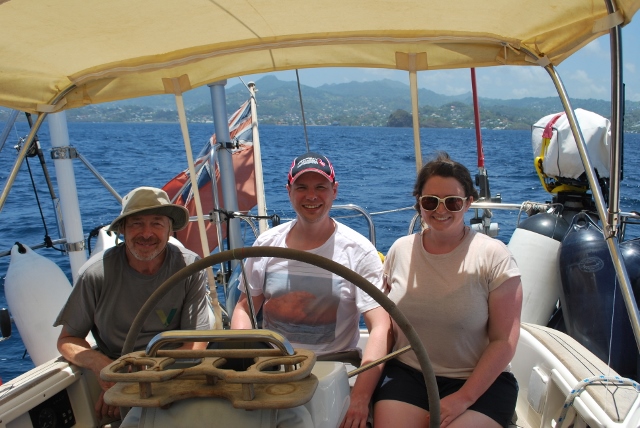
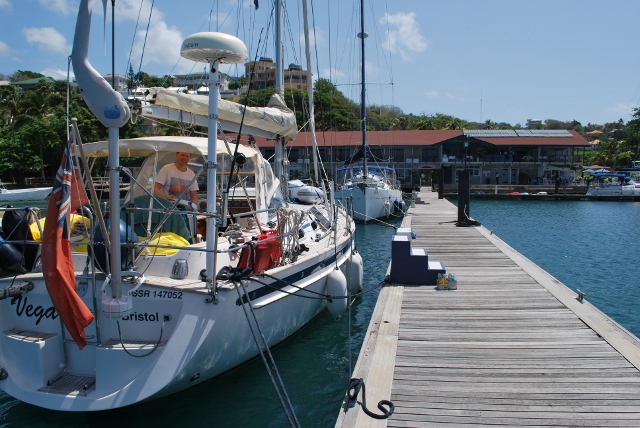
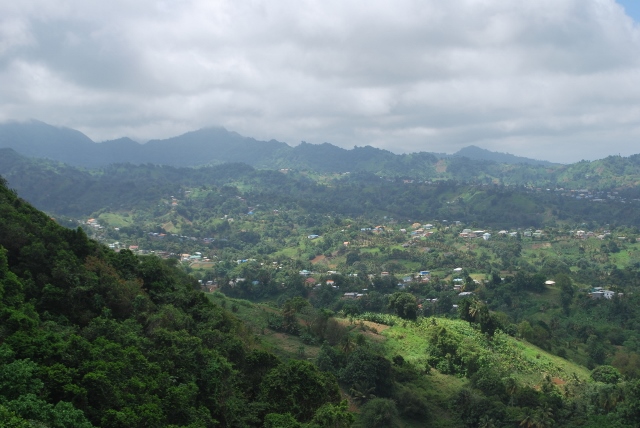
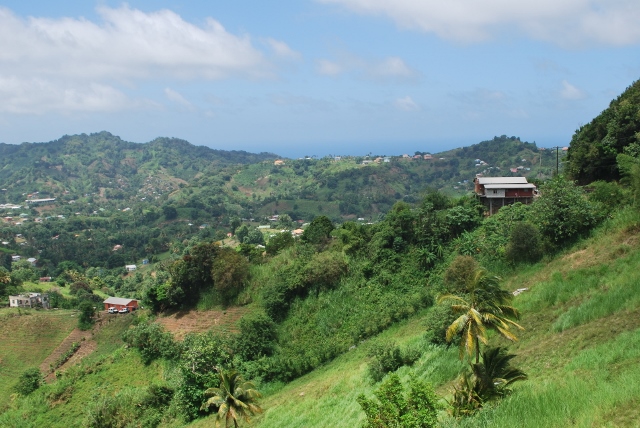
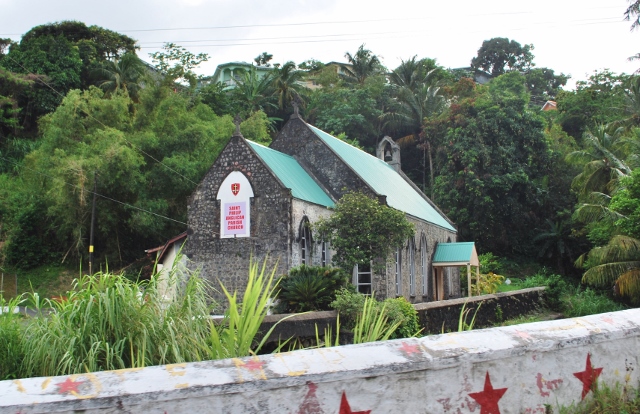
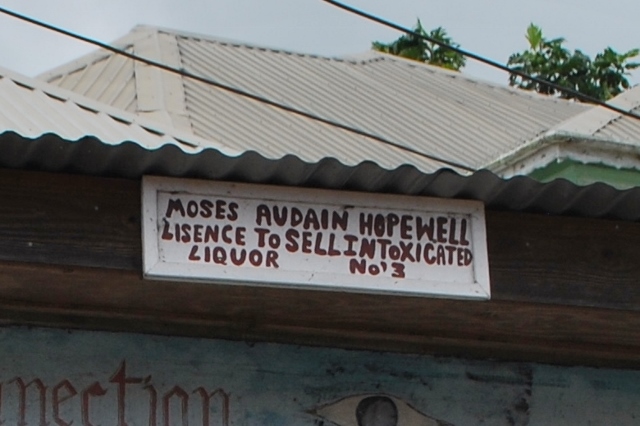
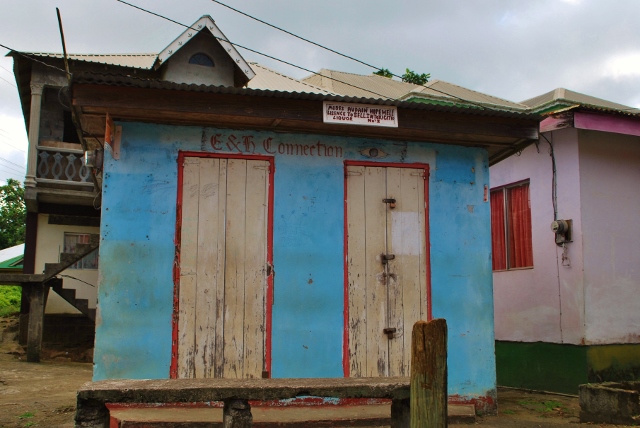
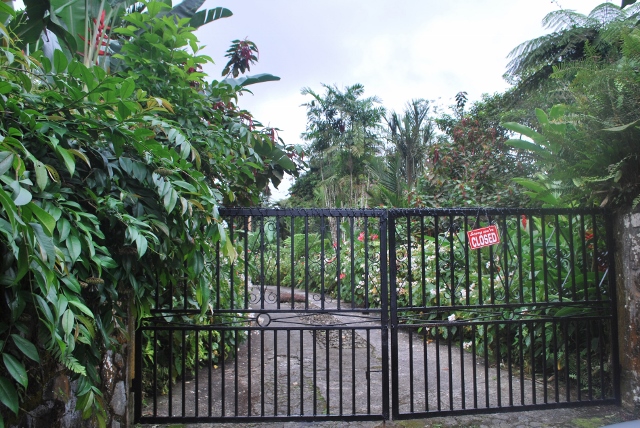
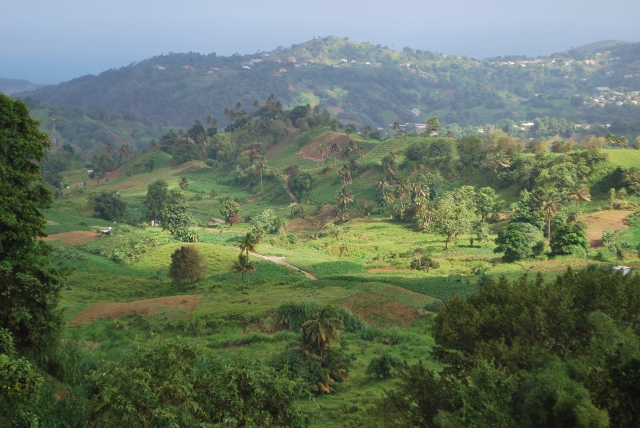
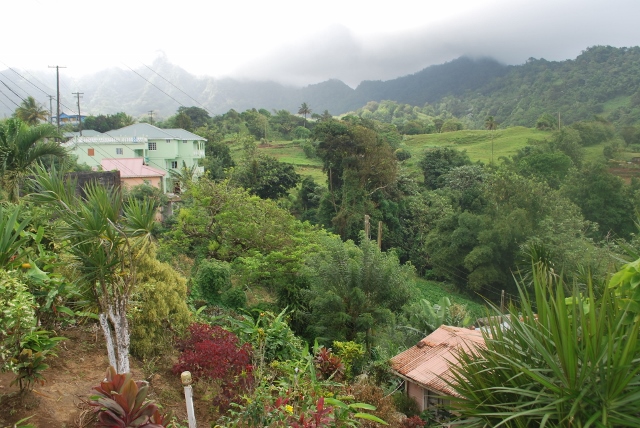
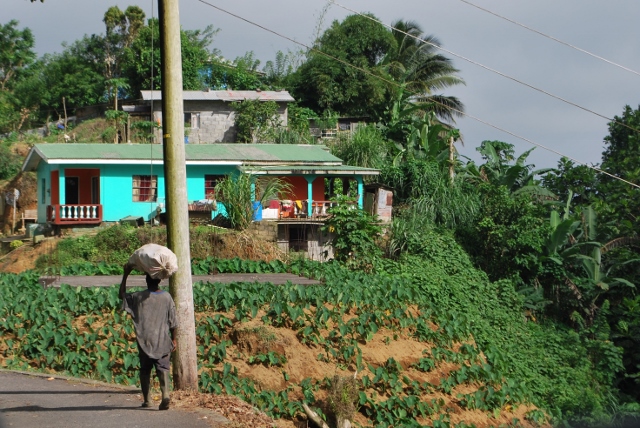
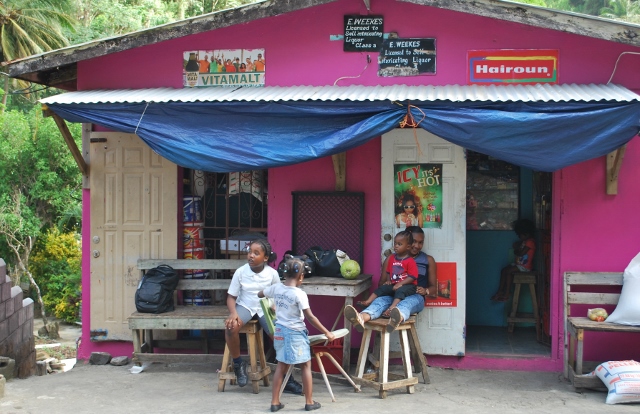
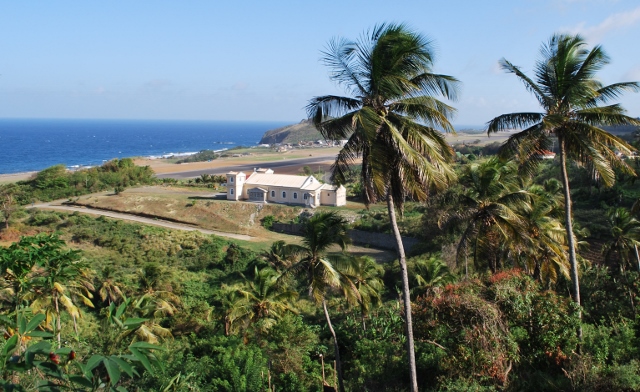
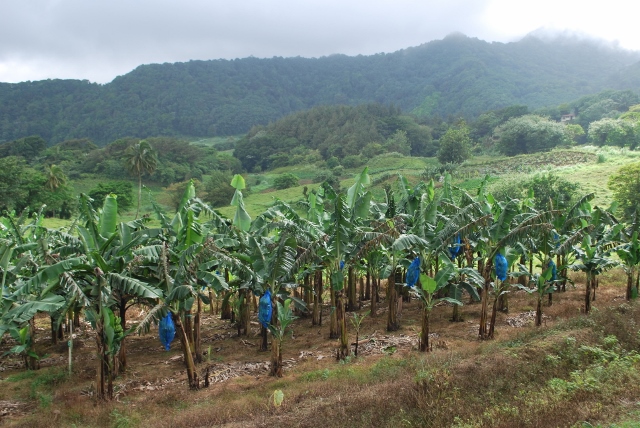
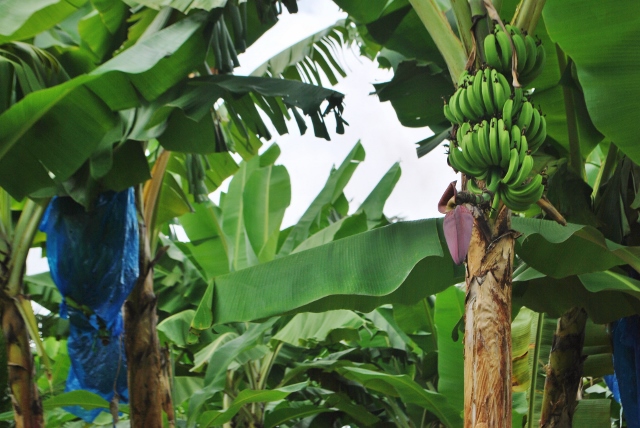
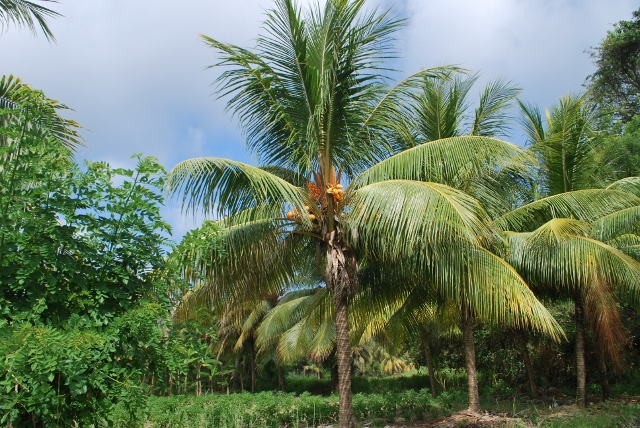
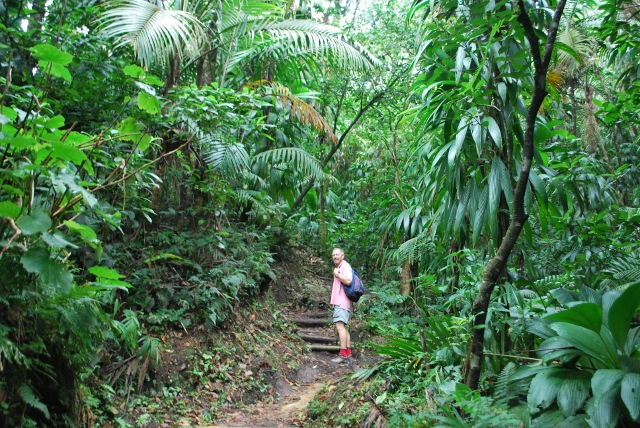
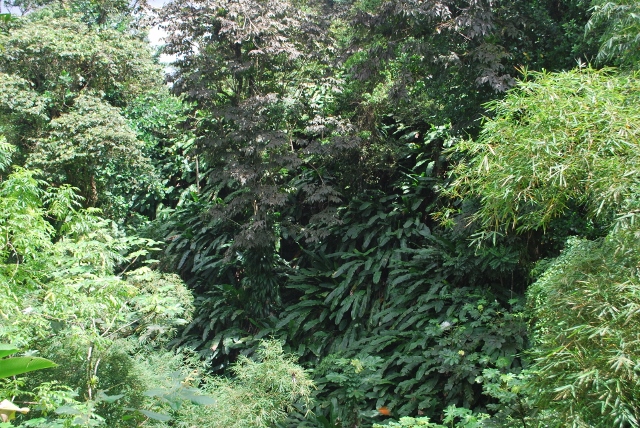
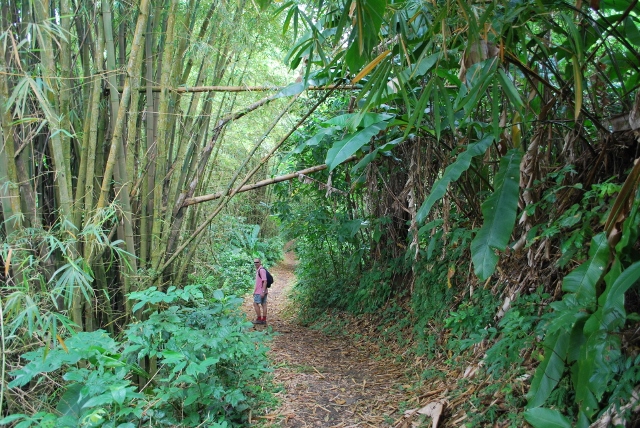
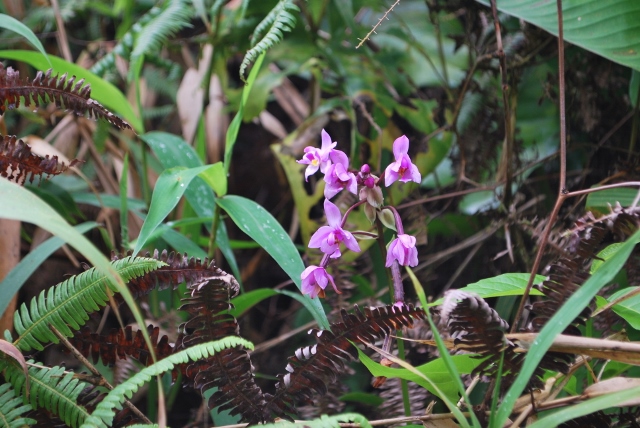
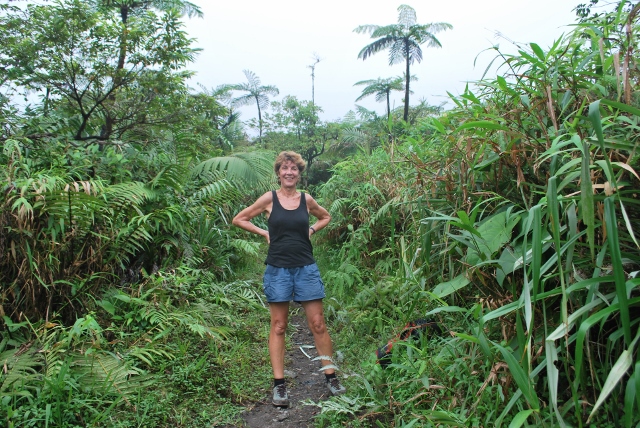
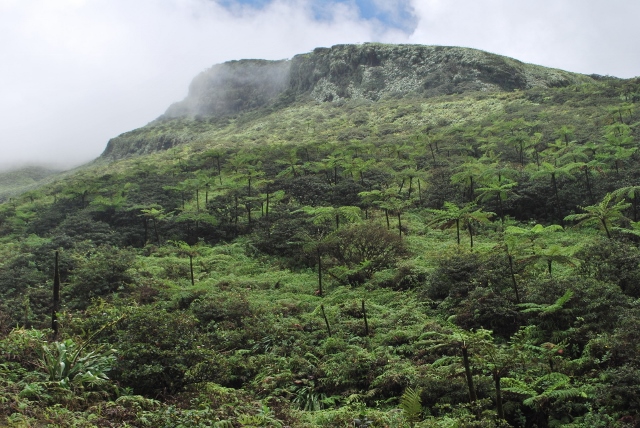
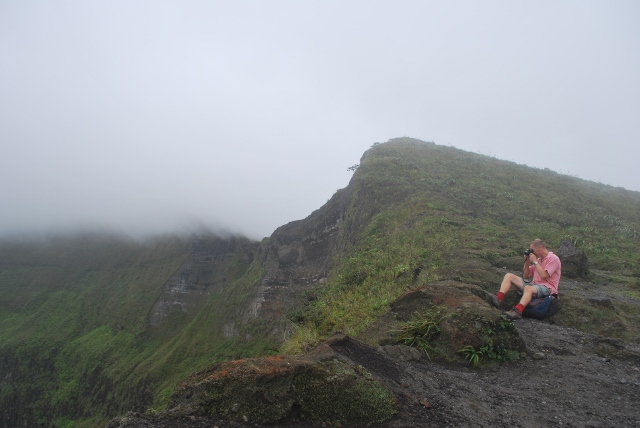
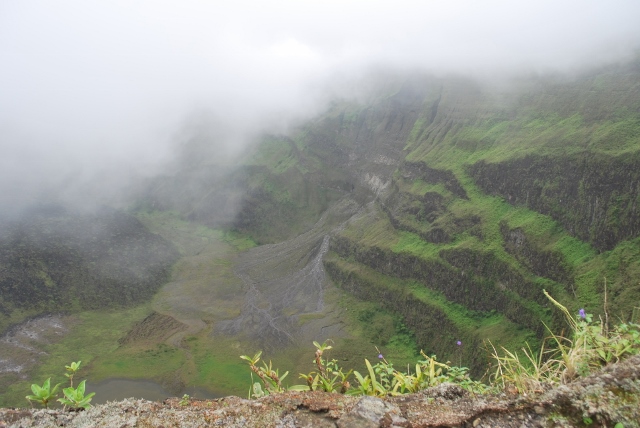
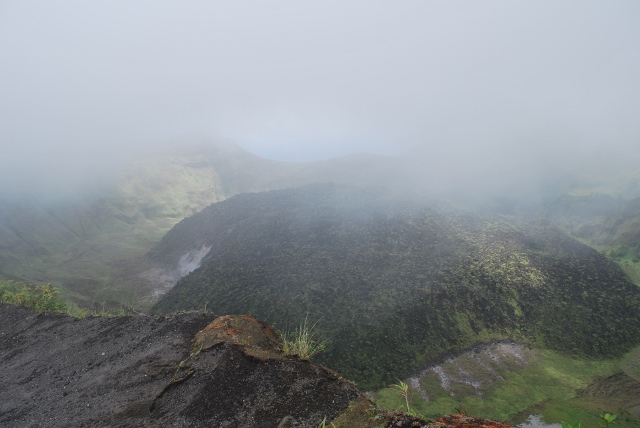
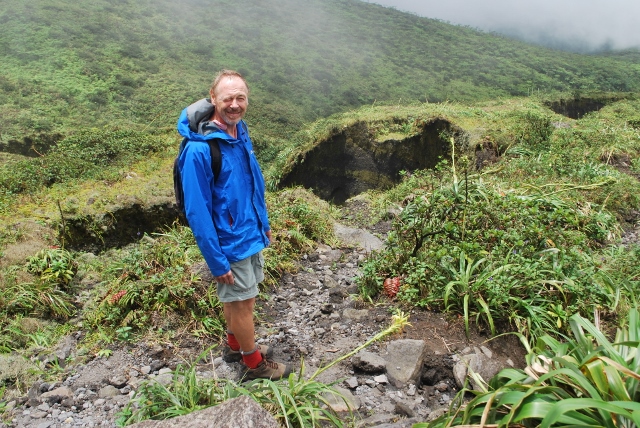
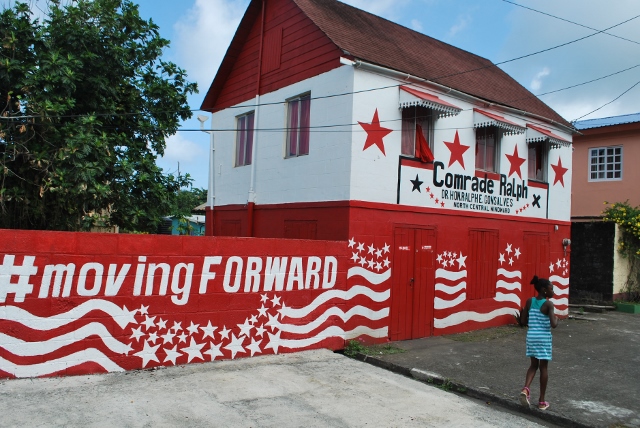
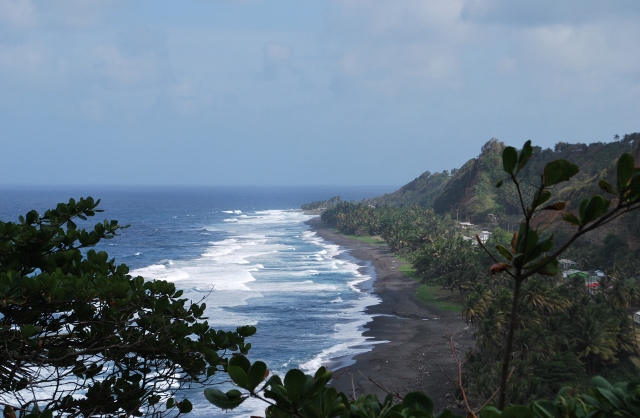
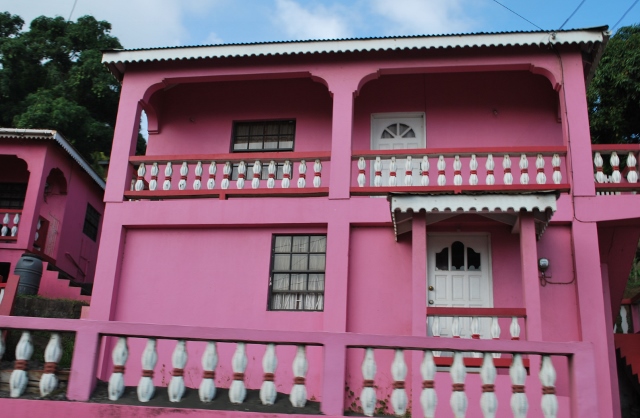



7 Comments
Judy davidson
June 6, 2016 - 8:52 amOh how very wonderful it all sounds! Luckily it is a glorious day here and everything looks like paradise here too! And no pirates… Our natives grow cannabis in empty properties, I understand.. Glad you have nice company, too and hope Willa recovers soon. xxx
annie
June 6, 2016 - 7:11 pmDear Jude, there’s no place like home really. Just need some ruby slippers and I’d be back.. Instead a flight home with BA on 16th xxx
Alieu
June 8, 2016 - 12:09 amOh, this is great, wonderful, Annie, Good exploring! I love it.
annie
June 10, 2016 - 5:15 pmThanks Alieu. It’s good to hear from our friend in The Gambia!
Annie Sparkes
June 6, 2016 - 9:48 amWill you be allowed on Mustique or is it totally private?
annie
June 6, 2016 - 7:12 pmOoh I’ll keep you in suspense until my next post? xxx
cheryl
June 15, 2016 - 9:09 pmThat volcano looks so spectacular . i love the overwhelming sense of everything being so alive in a jungle- probably my favourite habitat on earth .
give us a shout if you are back in the UK